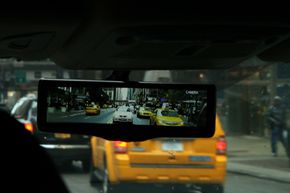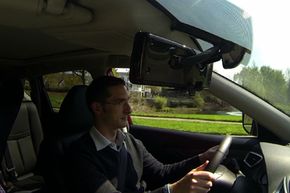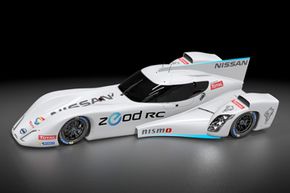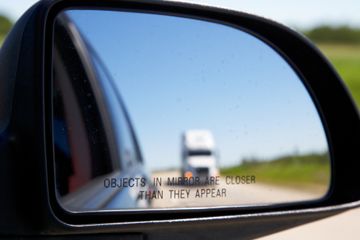Camera systems in cars are getting increasingly complicated, and new federal regulations are on the way so that every new car will eventually be equipped with a camera system for additional visibility and safety. In some cars, the complex camera and monitor systems that are supposed to increase the driver's visibility can be confusing and distracting ... and in some cars, the systems don't even improve visibility enough to actually be useful. Rear-view cameras and other peripheral camera systems for vehicles have generally been embraced as a useful tool for improving safety on the road, but it's safe to say that there's always room for improvement. Nissan is hoping to solve those problems with its new Smart Mirror technology. Nissan introduced its new mirror in 2014 at the Geneva Auto Show, and the company plans to start rolling out the system as a dealer option on Japanese models right away. The company expects that it'll be available in Nissans around the world by 2015.
So what makes the Nissan Smart Rearview Mirror different than other rearview cameras? It looks like a regular mirror, the traditional kind that works just fine when the weather is clear, and there are no obstructions in the car behind the driver; but when the rain clouds start rolling in, or the cargo area is stacked to the roof with camping gear, those aren't ideal conditions for rear visibility. So when a little extra assistance is needed, the driver can activate the Smart Mirror, and the mirror's regular view switches to an LCD screen that's inside the mirror housing. There's a high-resolution camera installed on the rear window of the car, which shows the driver an unobstructed view of what's behind and what's in the blind spots. This image is projected on the LCD screen, taking the place of the regular rearview mirror for as long as it's activated. The driver is able to switch back and forth with a simple control on the bottom of the mirror housing, which should help make the Nissan Smart Mirror system pretty easy to get accustomed to, especially for people who might have, until now, resisted buying a car with an optional mirror system. When new federal safety regulations are in place, which will force all new car buyers to get with the program, this Smart Mirror technology might be an advantage in the eyes of late adopters or technophobes, bringing more exposure to the Nissan brand.
Advertisement




